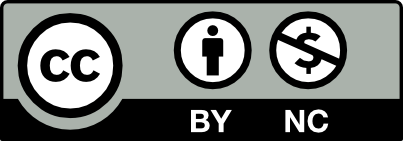Por favor, use este identificador para citar o enlazar este ítem:
http://hdl.handle.net/10609/92842
| Título : | Moocs en Cataluña: un instrumento para la innovación en educación superior |
| Otros títulos : | Moocs in Catalonia: fueling innovation in higher education |
| Autoría: | Sancho-Vinuesa, Teresa Oliver, Miquel Gisbert Cervera, Mercè |
| Otros: | Universitat Pompeu Fabra Universitat Rovira i Virgili (URV) Universitat Oberta de Catalunya (UOC) |
| Citación : | Sancho-Vinuesa, T., Oliver, M. & Gisbert, M. (2015). Moocs en Cataluña: un instrumento para la innovación en educación superior. Educación XX1, 18(2), 125-146. doi: 10.5944/educXX1.13462 |
| Resumen : | El fenómeno MOOC, surgido en los Estados Unidos, está despertando un gran interés tanto entre académicos como entre responsables políticos en Europa. Aunque complejo y cambiante, este fenómeno ha creado expectativas tanto a nivel pedagógico como estratégico o económico en el ámbito de la educación superior. En enero de 2013, la Generalitat de Catalunya impulsó un proyecto singular con la finalidad de dinamizar y proyectar la docencia del sistema universitario a través de una convocatoria abierta para la realización de MOOCs. En este artículo analizamos si sus resultados proporcionan evidencias suficientes para afirmar que este tipo de formación en Cataluña representa una innovación disruptiva. Para ello se ha establecido el marco teórico y analítico, principalmente basado en los trabajos de Christensen sobre innovación disruptiva, y se ha realizado un diseño metodológico, eminentemente de carácter exploratorio y descriptivo. El estudio define los indicadores básicos para cada una de las tres dimensiones bajo estudio (existencia de un nuevo mercado, grado de adaptación del curso y modelo de costes asociados) y recaba información de los 14 cursos seleccionados en la primera convocatoria. Los resultados de dicha convocatoria, con tan solo un 10.1% de proyectos financiados, permiten afirmar, por un lado, que los participantes de este tipo de cursos tienen un perfil distinto al de los existentes en la oferta universitaria actual y, por otro, que la mayoría de cursos presentan claros síntomas de innovación disruptiva. Los costes de realización de los MOOCs se comparan con los modelos de costes de formación presencial y en línea, siendo del mismo orden de magnitud si no se ponderan por estudiante o participante. En definitiva, puede decirse que existen claros indicios de disrupción en innovación aunque es necesario perfilar el marco analítico y disponer de más datos para avanzar en la comprensión y alcance del fenómeno. |
| Palabras clave : | MOOCs innovación disruptiva educación superior |
| DOI: | 10.5944/educXX1.13462 |
| Tipo de documento: | info:eu-repo/semantics/article |
| Versión del documento: | info:eu-repo/semantics/publishedVersion info:eu-repo/semantics/publishedVersion |
| Fecha de publicación : | 27-oct-2015 |
| Licencia de publicación: | http://creativecommons.org/licenses/by-nc/3.0/es/  |
| Aparece en las colecciones: | Articles Articles cientÍfics |
Ficheros en este ítem:
| Fichero | Descripción | Tamaño | Formato | |
|---|---|---|---|---|
| moocs.pdf | 311,83 kB | Adobe PDF |  Visualizar/Abrir |
Comparte:
 Google Scholar
Google Scholar
 Microsoft Academic
Microsoft Academic
Este ítem está sujeto a una licencia Creative Commons Licencia Creative Commons


